What does she do?
What would you do?
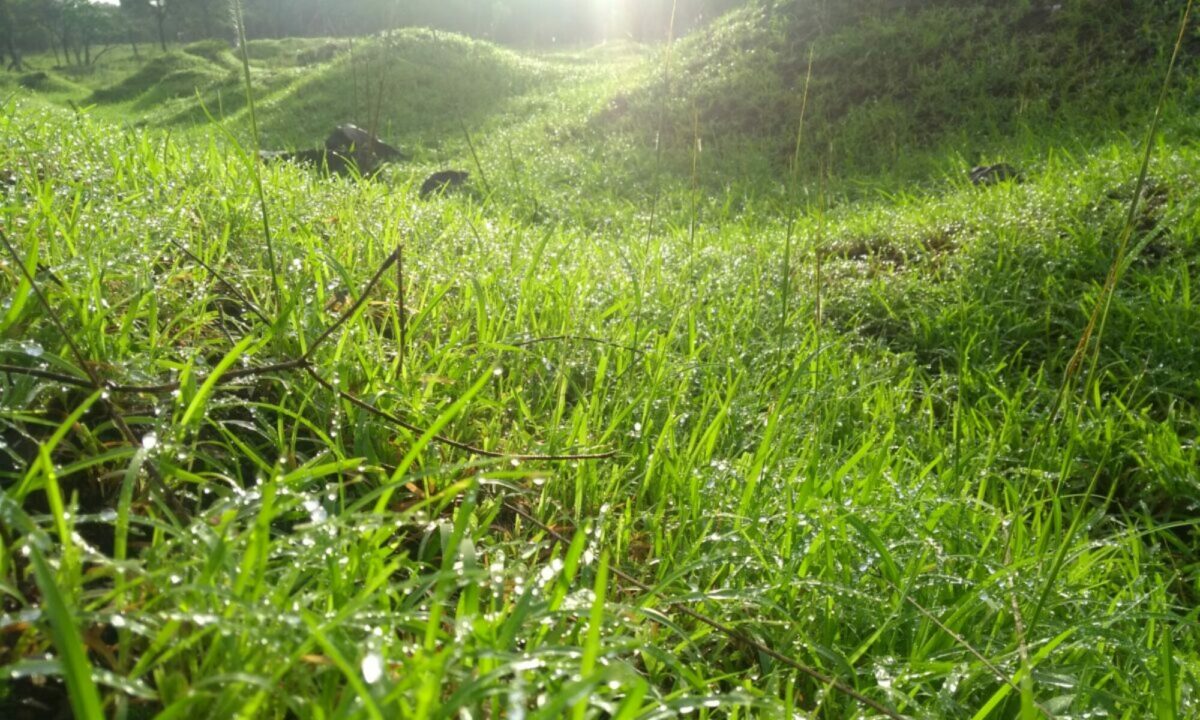
A khatta-meetha take on life around me through my presbiopic eyes!

Yes, these Dhol pathaks are always in the news for the ‘noise pollution’ they create and less for the tradition they represent. The dailies devote almost equal space to articles and photos that ‘glorify’ these pathaks and articles that describe how ‘bad’ the dhol beats are for our ears, for the participants’ ears and indeed for our entire body. According to this article, a typical 28-inch dhol generates sound in the 3-4Hz and tasha in the 3-22Hz range (peaking at 11Hz). This Times of India article (published on 11 Sep 2013 in Pune) quotes audiologist Kalyani Mandke as saying “Long term exposure to these vibrations can affect a person’s circulatory and/or urological systems. The person playing the instrument is at highest risk, but people in its vicinity cannot escape its effects either.” Read it for more details about a study that describes ill effects of vibrations and frequencies on the human body.
Being a health professional, I understand the gravity of the situation. Just under an hour at a dhol practise venue left my ear drums in a protective ‘shut down’ for two hours. Some of the beats actually cause a wierd feeling in the chest (probably due to the vibrations mentioned in the above article).
Does that mean the ‘Dhol tasha’ are to be eliminated all together? Do we let this tradition die?
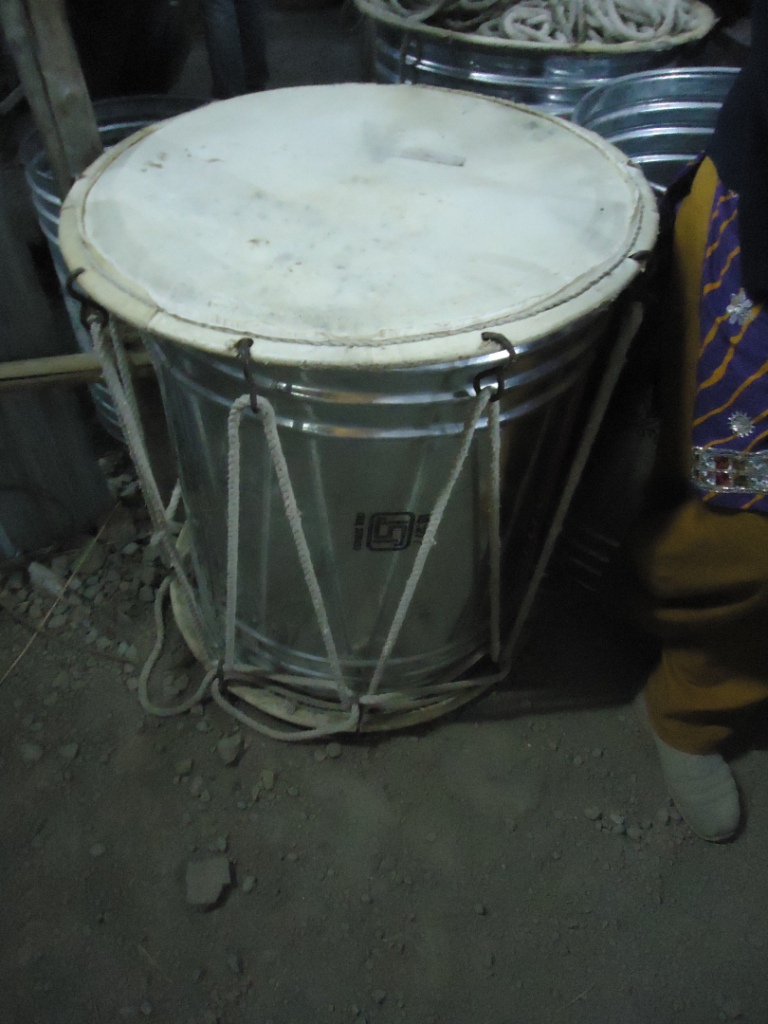 |
| Dhol |
On another note, I would like to know if DJ’s also face similar health hazards? Or technicians who work near aircraft on runways? I have seen them use ear defenders at civilian airports and at military bases where we were posted. And what about people who work with heavy-duty drilling equipment?
Drums Circle is a new trend that is used for team building and stress relief and it has immense therapeutic value as well in differently abled children. Obviously the sound levels there must not be as high as created by the dhols.
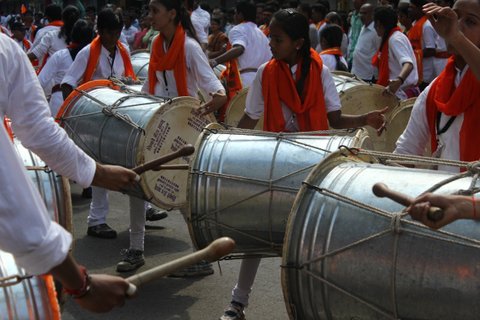
Is it possible to use some kind of ear defenders that will afford some amount of protection and allow the dhol to be played in a safer manner? Instead of criticising and rejecting the dhol tasha, should we not try to find a golden mean? Ideas anyone??
Think rationally.
Preserve our heritage and culture and stay healthy!
Cheers!
Thus being deprived of sleep can obviously create havoc with our systems. Read this Huff Post article that has a slide show describing the benefits of sleep.
Those of us in stuck in the rat race, need to pause and think. What are we earning for if we cannot get one of the basic human requirements?
I don’t know about others, but I am surely going to catch up on my sleep now and not later.
Good luck!
A loaf is ideal for picnics, to take on a journey or simply tuck into between mealtimes. No guilt feelings particularly if I don’t stand on the weighing scale thereafter.
Here is the recipe that I have reproduced from the above blog with consent.
Ingredients:
2 ¼ cups plain flour
2⁄3 cup Cocoa
½ tsp baking soda
½ tsp baking powder
½ tsp instant coffee
2 cups caster sugar
1 cup soft butter
3 Eggs
1 1/3 cups water – chilled
1 tsp Vanilla essence
Method:
1. Preheat the oven to 180 degree Celsius. In a bowl, add the butter and
the sugar, and cream the two together for about 5 minutes until it is
light.
2. To the creamed mixture add the eggs one by one and beat for about 2 minutes. Then add the vanilla essence.
3. Sift into this, the flour, cocoa, coffee, baking powder and baking soda. Combine it gently till you get a smooth batter.
4. Add the chilled water to the batter and mix again. Fold the batter slowly, just till all of the water is incorporated.
5. To a lined loaf (or cake tin), Pour the chocolate cake batter. Bake
for about 20 minutes or until the cake has risen and a cake tester
comes out clean.
Tuck in!
From experience I know that honey that is derived from Jambhul flowers is especially helpful for dry chronic cough. The irritating cough that often keeps kids awake at nights. I can vouch that this works like magic for adults suffering from dry cough as well. I use Madhusagar Honey
While simply eating a spoon of honey works it is best had as described below. I learnt it from my mother and she from hers.
So here goes…
You will need equal quantities of cardamom and cloves. Hold each with a pair of tongs and let it ‘burn’ on the gas flame. Pound the blackened cardamom and cloves in a mortar and pestle, add a generous quantity of Jambhul Honey and you’re ready to go.
Its a sweet spicy tasty concoction that kids and adults will devour without any complaints!
Try it!
Disclaimer: I have no vested interests in mentioning the above brand of Honey. Its one that I have used and trusted over the years. Any other one will give same benefits!!
Its sole
drawback seems to be that that it’s done indoors which is a good thing during the monsoon. I might even give it a try this year…
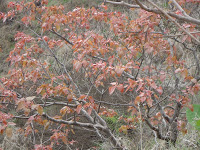 |
| Is this Peepal? |
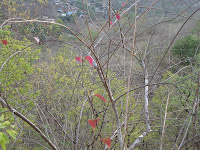 |
| Heart shaped leaves |
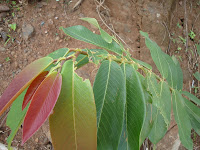 |
| Asana shoots |
Awwww Not agaaaaain…
Is that what I hear on seeing the post title?
But I am sure you will enjoy this post. The majestic Sinhagad offers something new each time one treks up (note: trek up, not drive up)- maybe a self revelation, some new aspect of its geography, changed landscape or as in my case, simply being able to recognise trees.
We climb up the Kondana Fort (aka Sinhagad) almost at any time of the year. The difficulty level soars in the monsoon due to rivulets of water, moss on the rocks, slush etc but some find this enjoyable. The other difference is in the trees growing on its slopes. They are totally bare (most are the deciduous kind) in summer which makes the climb all that more difficult as the rocks become terribly hot. Come monsoon, they burst into full green glory and flower as per their own individual seasons. Thus one gets a different visual treat each time, the backwaters of the Khadakvasla dam forming a steady constant in each.
The Kanda bhaji, Bhakri pithle, Dahi, Taak, Bhajalele Kanees (Bhutta/Corn on the cob) Nimboo pani, fresh fruits like Jambhul, Karvanda, just ripe-local mangoes are heavenly.
Like the last time, I found the fort to be quite clean, free of garbage (in areas that I walked) and people were generally disciplined. The stone track made walking easier and the road going up is under construction presently. The latter part towards Sinhagad is complete but the earlier part of the climb is still full of potholes with rocks and mudslides on the periphery. I did notice some cutely decorated Jeeps (Similar to those seen in some Rajasthan forts) ready to ferry people down.
My single complaint against lack of a proper toilet for ladies.
Last week, it was Red that ruled the climb. Several trees had lovely red shoots all bursting forth anticipating the rain gods to bestow their offering. I have compiled some photographs for you to enjoy and maybe tempt you to climb up as well… Besides red, green and brown were the predominant colours.
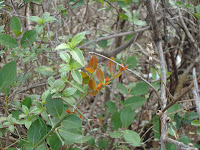 |
| Karvanda |
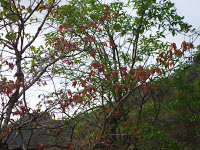 |
| Asana |
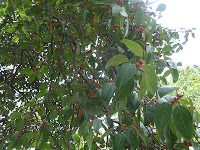 |
| Ficus |
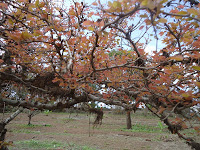 |
| Pithocelobium dulcae |
Cheers!
Archana
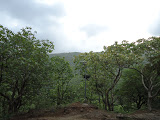
Sinhagad holds a special place in the hearts of Punekars and I dont mean for its history. If one has not been there, its simply not done. And I do not mean driving up in a vehicle to this hill located at about 25kms from the city. Nah! That’s for non-Punekars! Any self respecting Pune resident will climb up the about 800m (please recheck for precise figure).
Note: its a good idea to double click and view these images…
We had not ‘logged’ a visit for a long time and could finally trek up only recently. The climb up and down was as exhilarating as always. However this time I did find several interesting developments…
For a start the base was swarming with cars with no space to park even at 630AM. This probably is a good sign of people preferring the outdoors… The path that leads up now boasts of solar powered lamps. These must be tremendously useful for several Sinhagad enthusiasts who go up as early at 530AM. You see the true Sinhagad ‘fans’ take the first early morning bus from Swargate, climb up and then come down to the fort- in time to board a bus on its return journey.
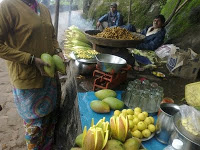
As soon as you reach the top the vendors tempt you with dahi, buttermilk, roasted bhutta, nimbu pani, groundnuts, mangoes and cucumbers – all of which I must add are excellent to revive an exhausted trekker! Further ahead one can savour pithla bhakri, bhajee.
Over the years their offerings have remained the same. I cannot say if this a success of desi over FMCG but the cost to transport packaged goods to the peak and then manually carry them to stalls cannot be an attractive proposition for marketers. You see, despite a tarred road going up to the top of Sinhagad, one has to walk all the way inside.

These vendors physically carry their ingredients on their shoulders or head to their stalls so visitors can enjoy a piping hot meal. This dissuaded us from arguing about the price of a cup of tea or dahi!
Looking around I was pleasantly surprised to find the area quite clean, no garbage and surprisingly was free of the usual unpleasant odours. I did not peer into the valleys or the undergrowth but that surely must have had a wonderful plastic collection! But I did find signs that Homo sapiens have not lost their ability to damage nature- note the engraving on the Agave.
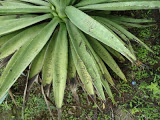
The climb down is tougher than going up, or may be as tough. If you are lucky you can get ride downhill in a jeep. All in all, a trek up is highly recommended in this season or the next for that matter!
Dont delay!
Ciao!
This is the link to my earlier post about Sinhagad: https://yenforblue.com/2008/04/sinhagad-calling.html
Prime time telly serials have increased our exposure to such events (though I am told some Hindi serials increasingly portray stories about Marathi families) and hey why not! As most families now have one or two kids, there is every reason to ‘celebrate’ in this manner. Splurging on flowers, clothes, jewelery and food seems the order of the day…
An upcoming wedding means women may go on a crash diet to best show off their zari and crepes and are not keen to lose it all in the high-calorie, deep-fried, sugar rich menus that such events usually offer. Others may have ‘weighty’ issues like diabetes, cholesterol (an increasingly common condition among Indians) hence again will not really ‘tuck into’ meals. Gone are the days when the hosts would go round to serve their guests – the exercise mostly consisted of them ‘coaxing’ (the closest possible English equivalent I can think for the Marathi word आग्रह) the protesting individual to eat some more of the sweet. So one often found the occasional guest ‘manfully’ demolishing a plateful of jalebis or several bowls of shrikhand while the ‘lucky’ others had long cleaned out their plates. Instead we now have buffets which has is own plus and minus points…
Most Maharashtrian weddings stick to our typical menu for the wedding lunch। Yet come reception time and most weddings offer a bewildering range of foods ranging from Italian, Chinese, north and south Indian delicacies, chaat, salad bar, fruit and desert spreads.
At some recent events, I found most guests had helped themselves to few preparations and some stalls were almost ignored. I shudder to think of the extent of leftovers at such events. Considering cost of food, is it really morally and ethically correct to be a party to such wastage? Are we worried about being called as ‘less hospitable’ if we offer fewer but well-prepared dishes? Are these ostentatious food spreads meant to be some kind of a statement about our social or economic status?
Do we have the ‘courage’ to stand apart from the crowd?
These are difficult questions with even more difficult answers.
But they demand some introspection…
All the best!